Swimming Pool Installation
-

Professional pool construction
-

30 years of experience
-

We provide services throughout Serbia
Are you in the process of planning or building a pool? Learn all about swimming pools directly from the experts.
See our blog
Do not hesitate to contact us if you have any questions. We are here to help as much as possible whenever we can.
Contact usPool installation Serbia
If you are thinking about buying or building/installing a pool in your yard or house, take a look at our wide range. We offer liner pools, Concrete pools, ISO block pools, and Hydro massage tubs. If you already have a swimming pool, see which options and which swimming pool we offer equipment for its upgrade and improvement.
New pool foil technologies have led to a reduction in price and opportunities for a larger number of people to decide to build a swimming pool in the yard of their house, cottage, etc. If you are thinking about building your own pool see more at pool construction planning .
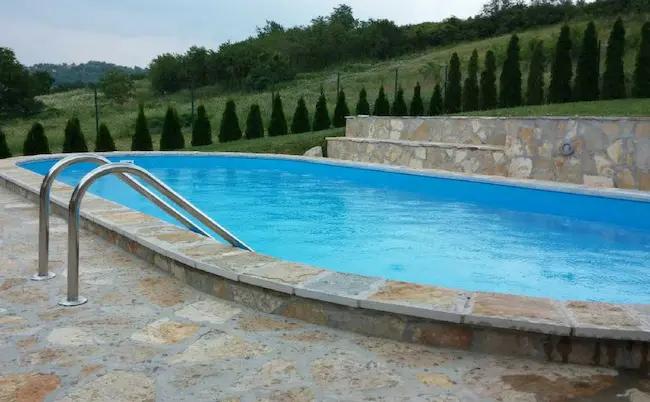
Liners

Pool planning
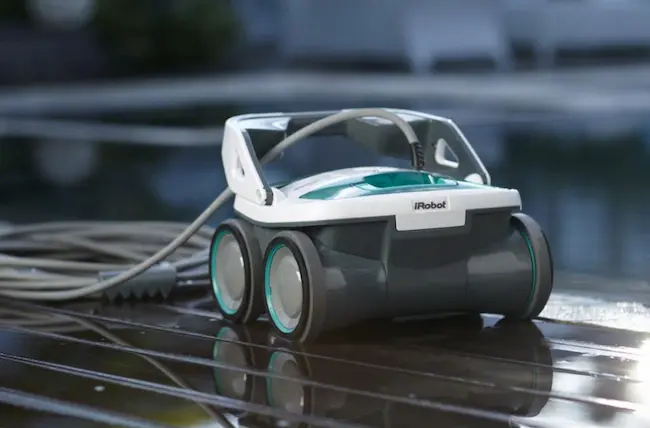
Pool cleaning robots
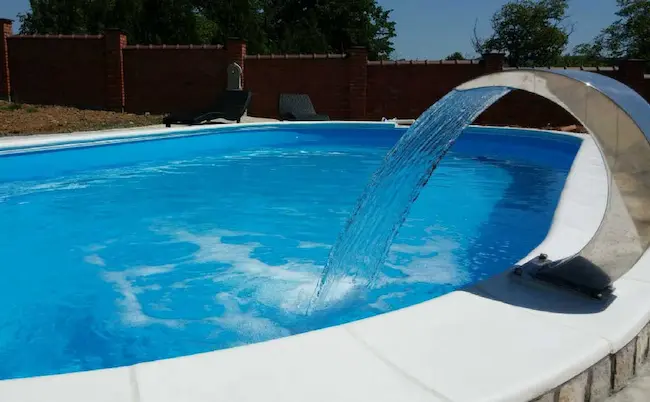
Pool waterfall
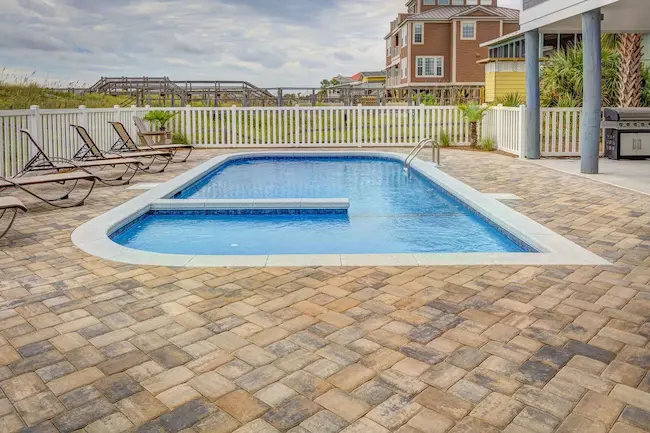
ISO block pools
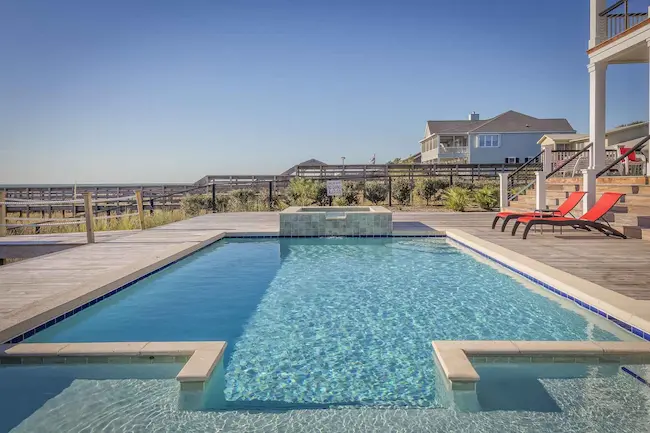
Concrete pools

Pool domes

Pool covers

Hydromassage tubs
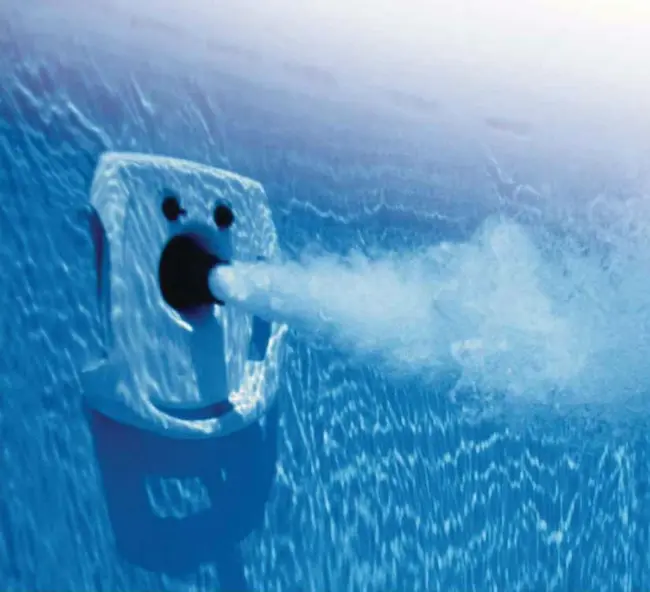
Hydromassage pumps

Swimming Pool Equipment
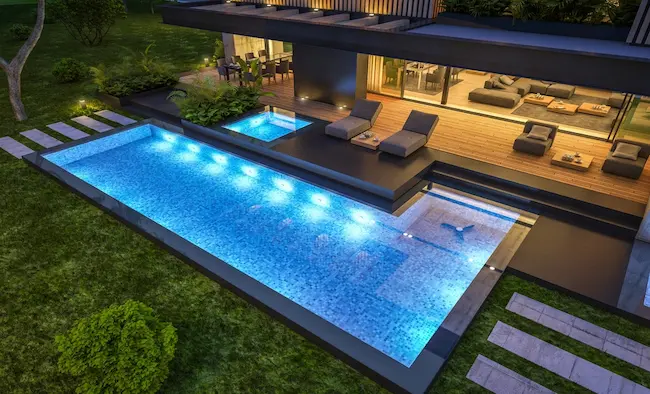
Pool lighting
Liner pool installation
Liner pools are built by putting them in an excavated hole, after pouring reinforced concrete slabs, sets a frame that can be of different materials (in our case it is usually steel sheet), and then the inside of the pool is lined with a special foil (liner). The construction of a liner pool takes about 4 weeks. Linersky pools are made in over 20 dimensions, and the depths are up to 1.5 m. All equipment (filtration, attractions, lighting, heating...) is installed when assembling the pool. As in the case of other types of pools, of the liner, the desired equipment should be foreseen in the planning phase to be installed in the future, to leave the necessary installation for later installation. The advantage of this type of pool is the low price.
Construction of concrete pools
Concrete pools are built by placing them on a concrete liner reinforced concrete walls are being installed. After that, it is installed waterproofing, and then the desired finishing material. Final Materials for the construction of concrete pools can be tiles (glass or ceramic), different coatings, or foils. According to the method of removing water for filtration, this type of pool is divided into skimmer and overflow swimming pools. Skimmer pools are those where the skimmer (opening through which water goes to the filter) is inside the pool, and with overflow pools water constantly overflows from the pool and goes into the underground concrete tank, under or next to the pool, from where it goes on to filtration.
Construction of a swimming pool from ISO blocks
A swimming pool made of ISO blocks allows savings, not only in the time that is needed to build the pool but also in money. The main advantage of this construction system is the ease of use: after placing the concrete slabs, blocks are stacked, reinforced, and then concrete is poured into them. In addition to being cheaper than a classic concrete pool, this system construction is faster and easier, and at the same time cleaner for the environment. Thanks to the shapes of ISO blocks (rectangular and bent) can be used to create a swimming pool of any form. The blocks also have excellent thermal insulation properties, so the heat release is about 10 times less due to the presence of air within the material.
Hydro massage tubs
Hydro massage tubs can be built-in, if they are installed on the floor, and they can there can also be free-standing bathtubs. Freestanding can be installed in the garden, on the terrace, veranda, or winter garden. Freestanding bathtubs have a larger one the possibility of positioning, and their additional advantage is that you can take them with you if you move to a new house. All hot tubs are equipped with massage pumps, water heaters, and control panels, as well as optional accessories for music, underwater lighting, etc. They make are in various sizes and for different numbers of people. The inner shell it can be of different colors and the paneling can be made of different materials (artificial or natural wood or metal structure).
Frequently Asked Questions
Depending on the type of pool chosen, its lifespan can range from 10 to 20 years, and for well-made concrete pools, this period can be even longer. Regular maintenance extends the life of pools, and for certain types, such as liner pools, the pool lining or liner can be replaced after a certain period, significantly extending their period of use. Expect your pool to last longer if you do everything as intended for the type of pool you choose from the start, without compromising on the quality of materials and equipment. Like any other property, a pool needs regular maintenance, occasionally repairing some worn-out segments or parts of equipment, which will also enable longer use.
When a pool is made of concrete, waterproofing of the wall surface must be done by applying waterproofing materials that ensure that water from the pool will not penetrate the walls and thereby seep out, which can cause a range of problems with both pool equipment and construction. It is essential to ensure that the pool basin does not leak in any way.
There are also special paints for painting pool walls that do not allow water to pass through and can be used as a finishing material. It will occasionally be necessary to recoat the wall surface with these waterproof coatings because these materials are also exposed to the influence of chemicals used for pool maintenance, temperature differences, wear and tear from users, and minor damage during cleaning with mechanical means.
Increasingly popular are accessories that you can use for the pool to enhance the enjoyment it provides.
It is possible to add some accessories later, such as above-ground JET PUMP for swimming, HEAT PUMP for heating pool water, THERMAL COVER to protect the pool from mechanical impurities.
For some accessories, it is necessary to anticipate their later addition during the construction of the pool, such as HYDRO MASSAGE or WATERFALL. For these accessories, electrical and plumbing installation in the pool is required.
If you have made a machinery room that allows for the addition of equipment, you can subsequently install equipment for automatic measurement and dosing of chemicals in the water treatment process.
Pool dimensions can vary greatly, from very small to, of course, very large. If there is limited space in your yard for a pool, it is not impossible to build one; it could be a smaller pool used more like a hot tub, for water massage, but also for cooling off on hot summer days. Adding water heating enables enjoyment of your backyard pool even on cooler days. So, don't give up; if you have a small yard, consult an experienced pool construction company and utilize any space that technically allows for the construction of a pool that will adapt in shape and type to your space. Keep in mind that the view of water and its sound have a calming and relaxing effect.
Pool construction consists of several phases, from planning, designing, preparing the site, carrying out construction works, making plumbing and electrical installations, constructing a machinery room, final or finishing pool lining and equipping the pool basin, as well as installing the equipment necessary for operation, water purification, and disinfection. It's hard for any company or individual to carry out all these works without engaging subcontractors, at least for some of these phases. Usually, these are construction works. So, our company handles all other phases, except for construction works, from start to finish, including commissioning and user training on how to operate the equipment and maintain the pool.
So, we only hire local contractors for excavation and rough construction works, as this minimizes costs per user and is the most justified logistically.
The pool equipment is placed in a special room or pit designed for this purpose, which is also created during the construction of the pool in the immediate vicinity of the pool, at a distance of 5-6 meters, in order for the efficiency of this equipment to be maximized.
For this purpose, a part of the garage, basement, or some shed with dimensions of 2.5x1.5m can be used, if such rooms already exist and are not far from the pool construction site. Of course, this equipment must be easily accessible for operation, protected from large temperature changes, well insulated due to moisture and noise, and the equipment itself requires operation in a clean and dry space. It is necessary to allocate a part of the space for storing supplies and equipment for pool cleaning and maintenance.
Unlike the times when a pool was a luxury affordable only to the wealthy, today it is an investment that a large part of the population can afford, and the price varies depending on the type of pool and level of equipment. Of course, the construction method, accessibility of the yard for construction operations, but also a number of other factors that determine the price of pool construction also affect the price. For some simpler forms and levels of equipment, this price ranges from 5,000 - 6,000 euros, and for larger, more demanding, and equipped pools made of durable materials, the price ranges from 10,000 - 20,000 euros.
With good planning, some phases can be done later if their subsequent installation is anticipated in time, primarily referring to the level of equipment in the mechanical room and some of the accessories that can be installed later, thus breaking down the entire investment into phases.
During pool construction, there is a phase in which a hole is dug for the pool, creating a temporary excess of soil that must be removed and taken away from the construction site or stored in such a way that the same soil can be later used to fill the hole around the pool and, if the owner wishes, spread around the yard to improve and better shape the area around the pool. This fact also affects the price of pool construction because it creates additional costs, the so-called 'collateral damage', as the soil needs to be removed from the yard sometimes to a slightly more distant location where it can be safely disposed of.
Considering that pool construction consists of several phases, some of which involve subcontractors, the construction time for a pool is not fixed because it depends on a large number of factors such as the accessibility of the construction site and weather conditions. On average, this time ranges from 30 - 90 days, so it is necessary to plan and provide all the necessary prerequisites so that when starting this project, there are as few delays and uncertainties as possible that could potentially cause an extension of the construction period.
As the cost of pool construction has become more affordable, the variety of pool shapes and designs has drastically increased, so even the more complicated and demanding shapes are now more financially acceptable. Our clients often combine a pool with the addition of a jacuzzi as a separate part within the pool used for hydrotherapy, while some prefer their pool shape to be unusual.
The most popular pools are those suitable for swimming, which are larger in size and have standard shapes. When a pool is built according to existing factory standards offered, they are also more affordable. Therefore, rectangular shapes, perfect circles, and oval pools are currently the most popular.
When it comes to choosing materials for pool construction, we recommend using durable materials, but today there are also new materials on the market that are convenient and very durable, such as ISO BLOCKS, which are easily transportable, and their use significantly reduces the pool construction time.
Also, pools made of ready-made concrete panels are becoming increasingly popular, with a warranty period of up to 20 years, they are very easy to install, incredibly sturdy, and allow for the creation of various shapes.
So, we would highlight, new on our market, pools made of ready-made concrete panels of various shapes and dimensions.
Whenever you decide to afford yourself a pool, first consult a company with a lot of experience, so that they can make a pool construction plan and an adequate offer that is in line with your wishes and possibilities. Companies with little or no experience simply cannot answer all the questions that are put to them, nor the unexpected challenges that these projects sometimes bring. So when you are considering starting pool construction, you should know that it should be a one-time investment, and the work should be done qualitatively to last you a long time.
Contractors who offer a "turnkey" service are your best option, and if you have the opportunity to engage some of your own workforce for a phase of construction work, it is a way to save on construction costs.
Check how many completed projects the company you want to hire has behind them. The equipment offer is also very important because higher quality equipment provides better and longer-lasting operation.
If all phases of pool construction are timely planned, the construction time will be shorter. You should plan to start pool construction in early spring, as soon as weather conditions allow, so that you can start the summer swimming season and use the pool fully prepared.
If you are late, the work may take longer, both due to the availability of contractors during the season and due to the fact that the work itself sometimes can last up to 90 days.
Some users decide to prepare and perform rough construction work in the fall of the current year, and finish work before the start of the next swimming season.
In the post-corona era, homes with pools have gained the most value because people are increasingly looking for this feature in tourist offerings so that they can go with their families for a weekend, holidays, or vacation to a domestic destination that is isolated from the city's heat and noise, and which also offers various types of experiences, amenities, and a new dimension of spending time with loved ones.
The value of properties that have pools has drastically increased, so from an investment point of view, it is completely justified. The new value of the property is reflected not only in financial terms but also in the fact that when you have a pool, friends, family, and children will come to you more often, which in itself brings an increase in quality of life.
Choosing a pool should be a task that brings satisfaction and enjoyment to the buyer in planning. So don't rush, make a good plan, consult with a professional company, and come up with the right solution. You should consider the size you want for the pool so that you leave enough space for bathers to move around it, stay near the pool, sunbathe, and enjoy the view of the water. Another important thing is access to construction operations for access to the yard, removal of soil, a place for storing materials for pool construction, and also the choice of a place for storing the equipment needed for pool operation, i.e., the mechanical room. Another important factor when choosing a pool is the type, shape, and design. Pools made of durable materials are more durable but also somewhat more expensive, while those not made of concrete last min. 20 years and are more financially accessible. Also, think ahead about how the type of pool you want is used and maintained.
Today's offer of materials used in pool construction allows for the realization of almost any shape the customer desires. Everything is feasible, but still, consider both the practical aspect of usage and maintenance of the pool. When choosing non-standard pool shapes, your choice of finishing materials will be more limited than with pools of standard shapes for which liners are factory-made in such measures. On the other hand, unusual and specific shapes add an extraordinary charm and represent a unique decoration in your yard.
The swimming season usually lasts from early May to late September, weather permitting. To avoid depending on changing weather conditions and to extend the swimming season, it is necessary to provide pool water heating , and also to install some type of pool cover to retain the temperature of heated water for a longer period, thus preventing cooling and dirt accumulation in the pool overnight. All this can be achieved by adding a HEAT PUMP and a THERMAL COVER, as detailed in our blog, with links highlighted.
Once you have a pool, make the most of it for as long as possible.
Fortunately for pool users, building pools in Serbia does not require any special permits. However, when building a concrete pool, which is considered a permanent structure and occupies a significant portion of the yard, it is advisable to consult with an architect because when constructing a new structure, approval from the relevant authorities regarding the occupation of the plot where it is being built is required. In all other situations, this will not be necessary, especially since most pools are considered prefabricated-demountable structures. No permits of any kind are required for prefabricated-demountable structures.
Nevertheless, it is advisable, during the planning phase, to consult with an architect regarding technical capabilities and soil stability at the pool construction site. Keep in mind that some types of pools, especially large ones, exert a pressure of 50 - 100 tons when filled with water.
Of all types of pools or materials for their construction, concrete pools have proven to be the most durable, but their construction is also the most expensive. When building a concrete pool, you can combine shapes, sometimes narrower, sometimes wider, you can combine depths, shallower in some parts for children, and deeper in others, you can create a seating bench in the water, a bar, partition off a section for a Jacuzzi massage, literally let your imagination run wild, which is not possible with other types of materials.
Concrete pool construction should be entrusted to professionals who will guarantee that your desires can be successfully realized. And for modern pool construction ideas, check out our blog.
In order for swimmers to enjoy the pool and its amenities, it is necessary to provide space next to the pool to be used as a beach, as well as for the stay of those who do not swim but want to be near the swimmers, for sun loungers, towels, or just for parents to supervise small children in the water. The most popular options are DECKING, imitations of wooden decking, which look very nice around the pool, are easy to maintain, quick to dry, and comfortable to walk, sit, or lie on. Concrete slabs are also quite common lately, being the most resistant to weather conditions and wear. In addition, grass provides a natural environment around the pool, so together it can be very nicely designed without the cost of beach construction being high.
When planning a pool and having pets, keep them away from the pool; they are curious, water attracts them, especially dogs. It often happens that they jump into the water and cannot get out. If owners are not nearby to help them, problems can arise. It is also not good for pets to contaminate the water in which children and perhaps older and more sensitive people will swim. Also, if young children are not supervised, it can be dangerous for them to be near the pool.
Installing some type of protective fence is not part of the basic pool construction package, but if you see a clear reason why you need a fence, it is definitely worth it. It will prevent unwanted incidents.
Regarding safety features, it is necessary to know that the prescribed depth according to European standards for residential pools is 1.5m and if you build a pool deeper than that, you must have a lifeguard license. This is the most important fact when it comes to the safety of swimmers. Also, non-slip materials should be used around the pool because walking and running on wet surfaces result in the highest number of injuries and falls, which we want to avoid.
Installing a protective barrier for children and pets is also desirable, and pay attention to the steps for entering the pool, which in themselves always pose a potential risk of injury.
The more popular name for whirlpool tubs is Jacuzzi, as it is actually the name of the Italian company JACUZZI, which was among the first to start manufacturing these tubs and has so far developed the widest range of its products (e.g., like JEEP for manufacturing JEEP-type vehicles).
An increasingly popular combination is to build a small part of the pool directly next to the main pool or as a smaller part within the main pool, which serves as a whirlpool tub equipped with massage jets, air blowers, rotating massagers, etc. It is important that the user gets the feeling of being in a spa.
Attractions and accessories for the pool such as a slide make the pleasure even greater, especially when younger people are involved. The slide is one of the additional attractions that you can buy and add to your pool, and you just need to ensure its stability when installing.
You can also get and use other pool accessories such as goals, basketball hoops, volleyball nets, rackets, and many others in the pool.
To renovate a pool, you don't need permits. You can redesign your pool by adding new features, update the beach around the pool if you haven't already, add a Solar Shower or some water attractions, and of course, replace some things that have simply worn out. Renovation typically involves replacing the pool's interior lining, liner, tiles, paint, etc. Some of our clients also choose to replace the coping stone, add a pool cover, or simply enhance the area around the beach. All of these works can be done without obtaining any permits, and the best time for these works is early spring, so that all works are completed and your pool is ready for the new bathing season.
The water in the pool must be clean, colorless, and hygienically impeccable. Water from the water supply network, with which we fill the pool, meets these hygienic requirements, but bathers and environmental influences bring impurities, fungi, and bacteria into the water that multiply very quickly, so maintaining the water in the pool is necessary. During the bathing season, the water should be filtered daily using a pump and filter, as well as treated with various chemicals. BLOG - POOL MAINTENANCE If you didn't maintain your pool, the water would quickly become cloudy, dirty, and thus unsafe for swimming. To ensure your pool provides pleasure and enjoyment, you need to take care of it, both the water itself and the equipment used to operate the pool and disinfect it. Regular checking of the functionality and maintenance will ensure proper operation of the devices and clean water. This by no means implies that you should be enslaved to the pool, but certainly you shouldn't neglect it, expecting it to maintain itself.
Rainwater is one of the purest forms of water because rain is essentially condensed vapor that passes through the air, and coming into contact with pool water can only change its pH value and possibly introduce a small amount of dust brought from the air. There is no need to change the water in the pool after rain, just check if it has changed its chemical properties and adjust it with the necessary chemicals. BLOG - POOL CHEMISTRY AND THEIR USE.
To successfully disinfect the water in the pool regularly, once a week, test the water for pH value and chlorine content.
If necessary, adding chemicals is ALWAYS done in small quantities because too many chemicals can damage devices and other pool components, and is not safe for swimming. Chemicals should be added exclusively in the evening after all activities in the pool have finished, so bathers do not come into contact with them, and experience has shown that they are more effective when not under the influence of sunlight and heat. Water alkalinity is very important for healthy bathers' skin and for the operation of other means you use for maintenance. Rinsing the filters and cleaning the skimmer basket is also done once a week to constantly be ready to retain new impurities from the pool.
The water in the pool changes color from colorless to greenish due to the appearance of algae that quickly form when temperatures are higher during summer or when the pool is not regularly maintained. This can be prevented by regularly checking the water with a pH value tester and Chlorine to dose the necessary amounts of chemicals needed for these two important components to be within the prescribed standards.
If algae appear despite regular water testing, you can get rid of them by adding ALGICIDE directly into the water, which is used to control this phenomenon.
Water alkalinity is very important for healthy bathers' skin and for the proper functioning of other means you use in the capacity of pool maintenance. Water alkalinity can negatively affect the overall state of the water and even the lining in the pool if it is not within the prescribed values, which is 7.2 - 7.4 on the water testers' scale. By regularly checking the pH value of the water in the pool and adding chemicals PH PLUS or PH MINUS, maintain water alkalinity always within those values, so that it is always suitable for bathing.
In addition to alkalinity, another essential chemical component needed in water that disinfects the water to make it bacteriologically safe for swimming is CHLORINE. It is an active and aggressive chemical, so it should be handled with care according to the instructions provided on the packaging. Without adding chlorine, the water would quickly become unsafe for you and others intending to use it. Chlorine automatic dosers are used to ensure continuous and controlled addition of this chemical. There are mechanical and electronic chlorine value meters with automatic addition of liquid chlorine according to the system and maintaining the set value which are the best and safest for use.
When adding chlorine to the pool, it should not be overdone, as with other chemicals added to make the water suitable for swimming, it should be kept within allowable limits, neither too little nor too much. Increased chlorine concentration in the water also leads to the effect of a strong chlorine smell, which is a sign that chlorine should be added carefully because such chlorine concentrations in the water can be harmful to the skin and clothing of bathers, can cause irritation and redness of the eyes, and also adversely affect the pool lining and equipment, damaging parts of the pool and equipment. This smell can also suggest that there is too much urine in the pool water.
The means to maintain the alkalinity and pH value of the water, CHLORINE for disinfection, ALGAECIDE to prevent algae formation, and FLOCCULANT, a substance for clarifying water and preventing cloudiness and removing the finest dirt particles, are the four most important chemicals that are necessary to have in the process of maintaining pool water in proper condition for bathing.
There are also some chemicals that are used less frequently or very rarely, so we'll discuss them some other time.
In well-planned pools that have a complete system for water purification and disinfection, with minimal maintenance and removal of mechanical impurities, the water in the pool does not need to be changed, similar to the process in an aquarium, the same water constantly circulates in a circle and is regularly purified and disinfected.
In pool winterization, a part of the water is drained and in spring fresh clean water is added, which is quite enough to be able to constantly use the same water in the pool with proper handling. Of course, if the water gets so dirty due to factors beyond your control, it's better to discard such water, refill the pool with clean fresh drinking water that you can easily maintain.
It's important to occasionally rinse the pool water filter.
If you have mechanical impurities in the water, especially leaves, they need to be removed from the pool with a net, from the skimmer, or from the pool bottom. Leaves can dirty the water, clog the drain through the skimmer, and saturate the filter with dirt. Therefore, it is necessary to remove them before they start to decompose and cause water cloudiness, change its pH value, or create dirty sediment at the bottom of the pool, which can only be removed by vacuuming.
Pool covers prevent mechanical impurities from coming into contact with pool water, so be sure to cover the pool regularly when not in use.
For pool covering, there are several options, the most popular of which is the THERMAL COVER. It's a soft nylon cover that is manually rolled onto a shaft, very lightweight and floats on the water surface. In this way, it protects the water from mechanical impurities, prevents water evaporation, and thus loss of heat and chemicals from the water. There are also covers made of rigid materials, as well as DOMES, also called SLIDING ROOF SEGMENTAL COVERS.
You can vacuum your pool in two ways, with a MECHANICAL VACUUM cleaner, which is usually provided with the pool, and with an AUTOMATIC ROBOTIC VACUUM cleaner, which you can buy when you get tired of manual vacuuming. The first method involves a long hose that is connected to the skimmer, connected to a vacuum brush, and lowered to the bottom of the pool using a telescopic pole, then gently pulled along the bottom to pick up the dirt that has settled and carried away through the hose and skimmer into the filter. Automatic vacuums have their dirt retention chamber, which you empty and wash after vacuuming, all other processes with the robot are automatic, just lower it into the water and plug it in, it does everything by itself, some models clean the walls of the pool as well.
Sometimes impurities appear in the water that are very fine, so the filter cannot stop them because they are finer than the sand grain size in the filter, they are usually not dangerous for bathing, but they lead to water cloudiness. If your pool water becomes cloudy, do not despair, vacuum your pool, rinse the filter, skimmer nets, and pool pump, test the water for pH and CHLORINE and add 1 to 2 liters of FLOCCULANT. After 48 hours, check the condition of the water and then dose the chemicals according to the values you obtained by measuring. After another 24 hours, the water should clear up. The pool pump should run continuously for the first 24 hours, and then in a regular operating mode via the timer.
When planning a pool, if you have pets, keep them away from the pool, they are curious, water attracts them, especially dogs. However, they often jump into the water but cannot get out. If owners are not nearby to help them, an unfortunate accident can occur. It's also not good for pets to contaminate the water in which children, and perhaps older and more sensitive people, will bathe. The water gets dirty, and hairs and other impurities from pets remain, so bathing them in your pool is not recommended.
During the bathing season, it is necessary to filter the water in the pool every day. For the water to be clean, it must pass through the filter at least 3-4 times during the day. The question arises, how will you calculate how many hours of filtration this is. You will multiply the volume of water in your pool by 4 and divide the number you get by the power of your pump. For example, if your pool is 8 x 4 meters, the volume of water is 8 x 4 x 1.5 (pool depth) = 48 cubic meters. Then multiply the volume by 4, we get: 48 x 4 = 192. If your pump has a capacity of 12 cubic meters per hour, divide 192 by 12 = 16. This means that with a pump of this capacity, for a pool of this size, filtration should run for 16 hours a day. So, you choose the pump according to its capacity, how much water per hour it can pump through the filter without having to run most of the time, using the above instructions by dividing the volume of your pool by several different pump powers and when you get somewhere around 12-16 hours the pump runs and 8-12 hours it pauses, you have the answer to this question.
You can find out more about this topic on our blog, which specifically addresses this important question and describes in detail the procedure for preparing your pool for the bathing season, but here are the most important instructions briefly. Cleaning and preparing the pool for the start of the season involves removing impurities that have accumulated in the pool during the winter and topping up the pool with fresh clean water. Then it is necessary to do a "shock" treatment of the water by dissolving Chlorine granules in a container with water and pouring the dissolved chlorine into the pool. Leave it to act for 48 hours with the pump running continuously for filtration. After that, test the water to check the pH value and chlorine level. If the water is green, add Algaecide. It is also necessary to regularly maintain the water to keep it in proper bacteriological and stable alkaline condition throughout the bathing season.
Video instructions (Serbian):